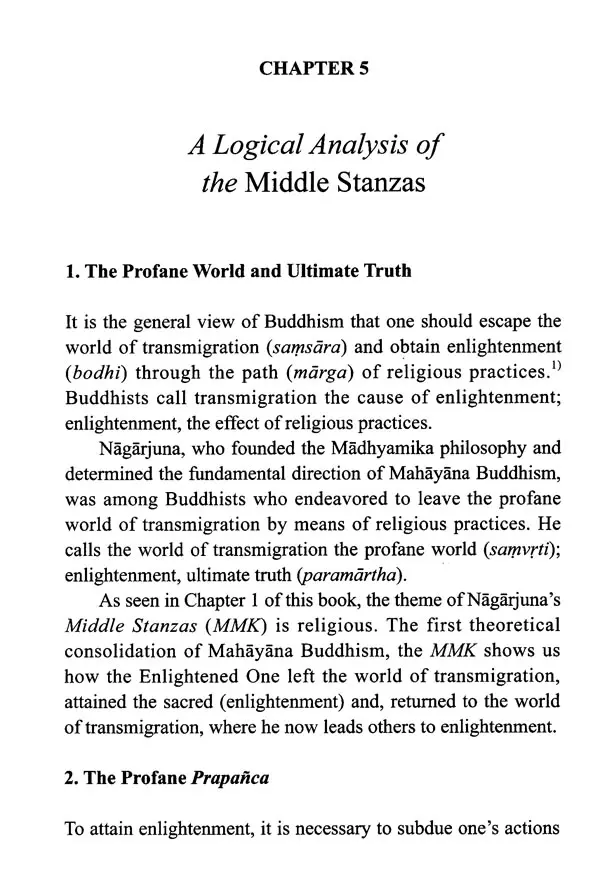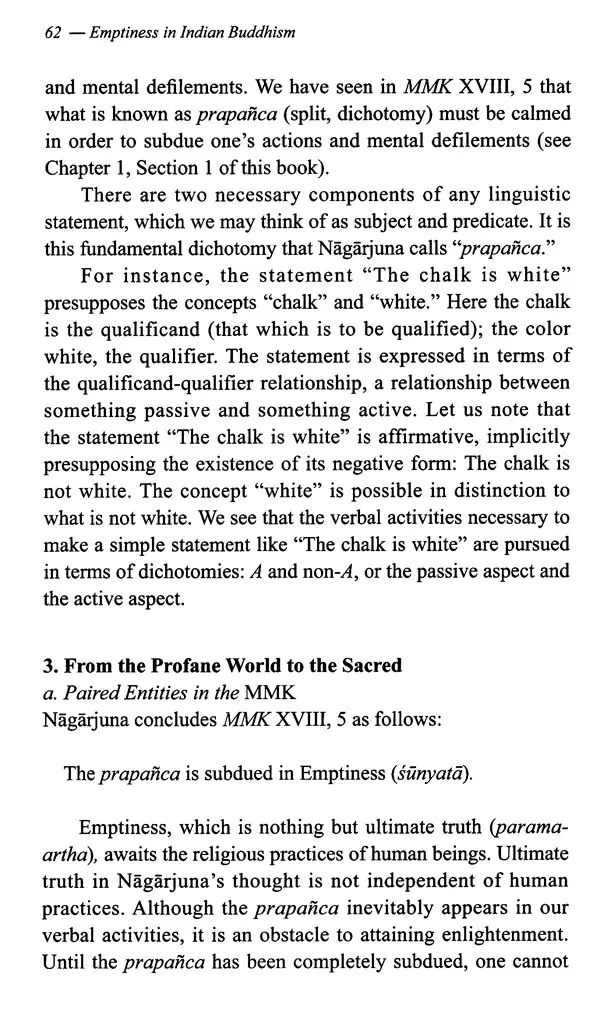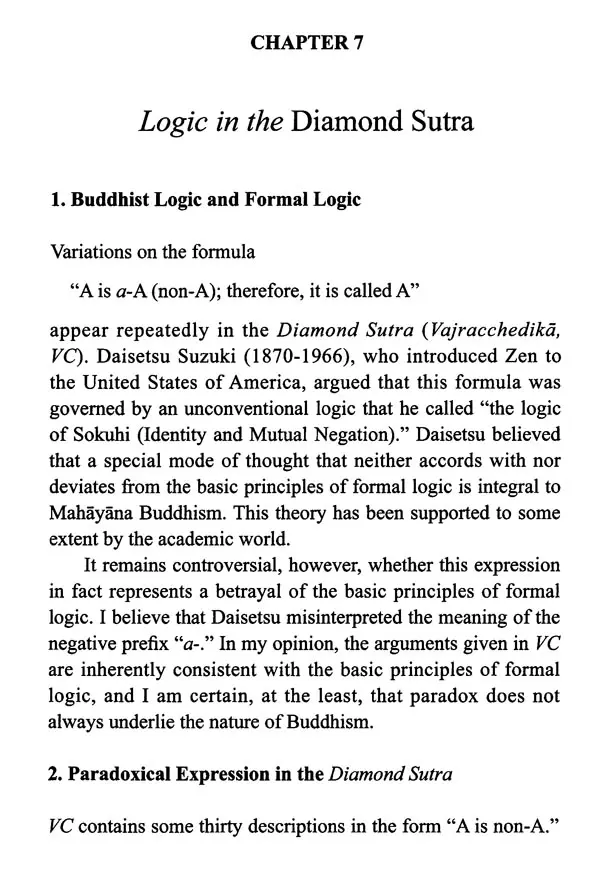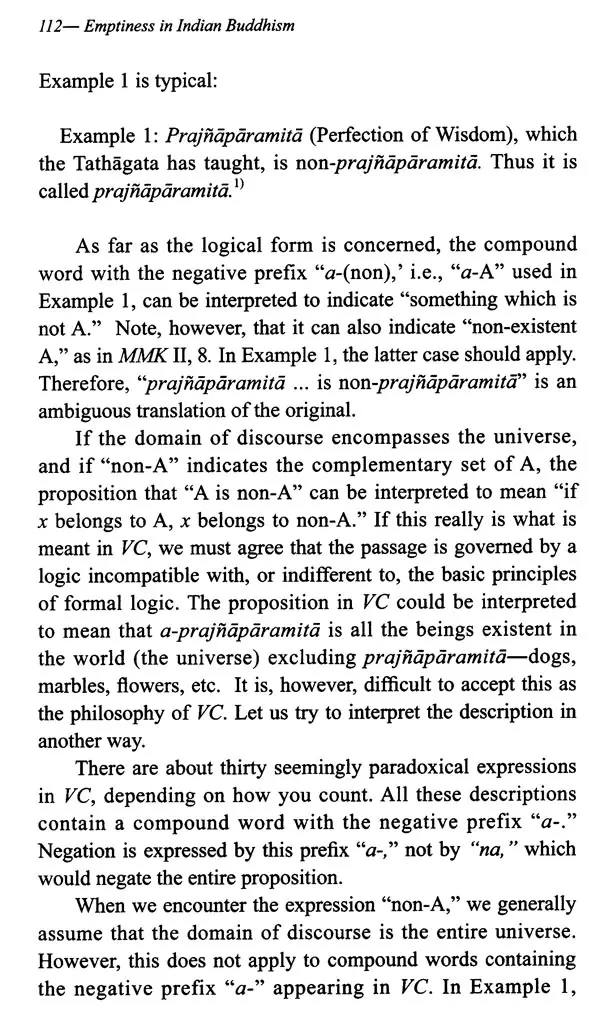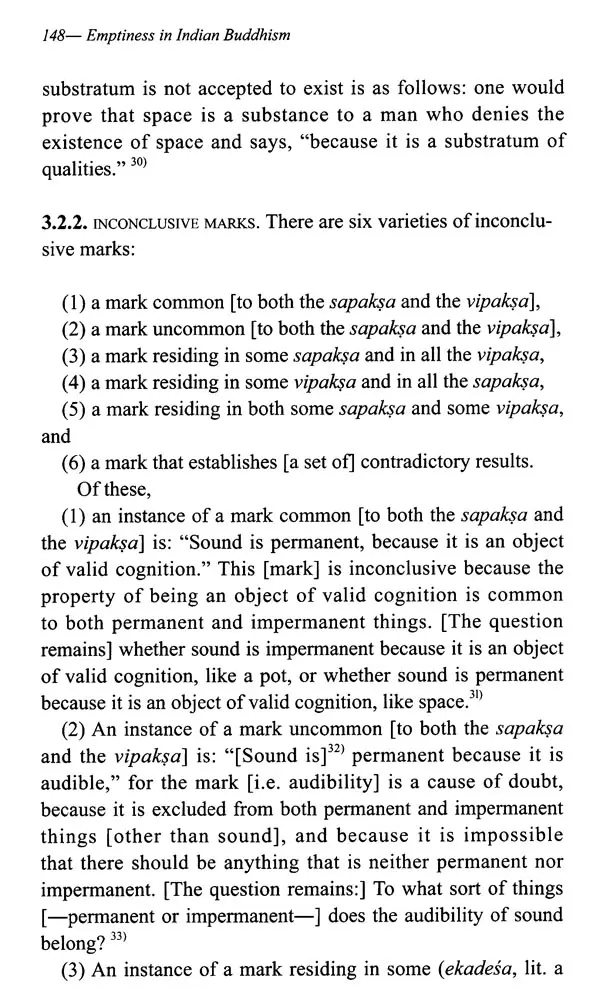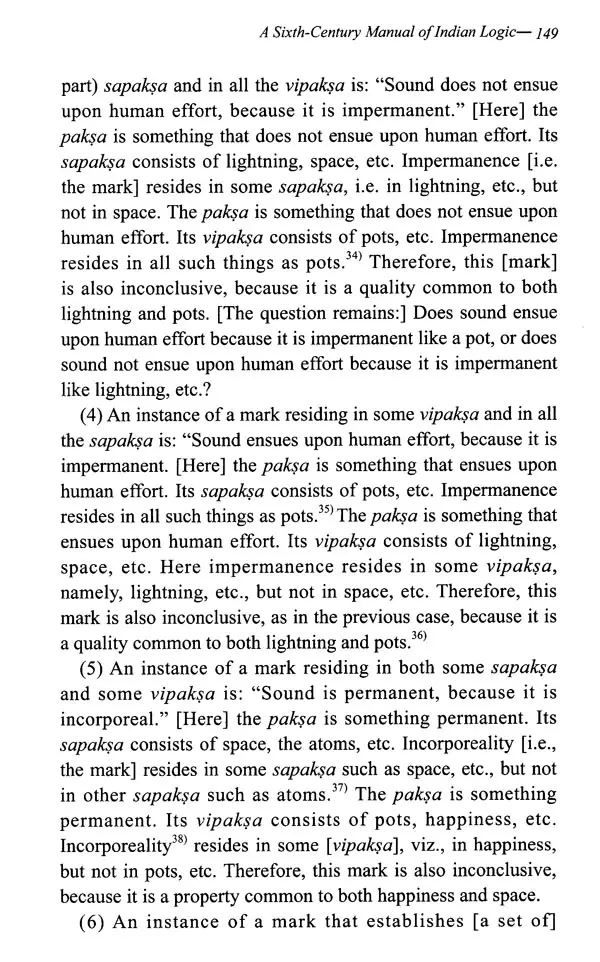
Emptiness in Indian Buddhism
Book Specification
| Item Code: | UAD571 |
| Author: | Musashi Tachikawa |
| Publisher: | Vajra Books, Nepal |
| Language: | English |
| Edition: | 2018 |
| ISBN: | 9789937928809 |
| Pages: | 194 |
| Cover: | PAPERBACK |
| Other Details | 9.00 X 6.00 inch |
| Weight | 290 gm |
Book Description
MUSASHI TACHIKAWA, Ph.D. (Harvard), is Professor Emeritus at National Museum of Ethnology, Osaka, Japan. His publications include The Structure of the World of Udayana's Realism (Reidel, 1980); Introduction to the Philosophy of Nagarjuna (Motilal, 1997); Five Hundred Buddhist Deities (Adroit, 2000); Three Hundred and Sixty Buddhist Deities (Adroit, 2001); A Ngor Mandala Collection (Vajra, 2006); and Mandala Deities in the Nispannayogavali (Vajra, 2016).
This book is a collection of my essays on Emptiness thought in Indian Buddhism, journal articles and conference papers composed over four decades. All have been recently revised and reflect my current views.
I first became interested in this problem when I was a college student. What drew me to the question was: How is Emptiness expressed by words? Since then, I have returned to arguments concerning Emptiness over and over, in search of greater clarity. My approach has remained philological, depending on close reading of Sanskrit, Tibetan and Chinese texts.
The concept of Emptiness has been central to Buddhist thought throughout the ages. In Japan, it is most often associated with Zen. In recent decades, particularly under the influence of D.T.Suzuki, Emptiness has popularly come to be associated with intuition or paradox, assumed to transcend the limitations of rationality or logic. At its origins, however, Emptiness was not this. Nagarjuna, the second-third century consolidator of Emptiness thought, presented an entirely rational theory of Emptiness that was grounded in logic. Partly in order to demonstrate this point, I here focus on the careful argumentation of philosophical statements by Nagarjuna and others, transcribing them into the terms of Western formal logic. I also include a sixth-century manual of Indian logic (Chapter Nine).
Directly or indirectly, all papers included in this volume deal with the relation between dharma (property) and dharmin (property-possessor). The relation is crucial to Emptiness thought and plays a fundamental role not only in Buddhist philosophy but throughout the history of Indian philosophy as a whole, providing a key to the world views of different philosophical schools.
One form of dharma-dharmin is the relation between attribute and substrate. In the proposition, "The flower is red," the subject "flower" refers to the substrate; the predicative complement "red," to the attribute. The proposition, "The flower is red," may be rewritten without any change of meaning as, "The flower possesses the color Red." The rewritten statement clearly shows the relation between attribute and substrate.
Broadly speaking, the history of Indian philosophy saw persistent competition between two world views, Realist and Nominalist. Realists maintain that dharma (attribute) and dharmin (substrate) are independent and permanent categories. Nominalists hold that dharma and dharmin cannot be rigidly distinguished. Nominalism is of two kinds: Brahmanic orthodox streams, like the Vedanta school, and non-orthodox trends including Buddhist philosophy, Emptiness thought in particular. The Vedantins maintain that though dharma and dharmin cannot be clearly distinguished, both do exist. According to Emptiness thought, neither dharma nor dharmin exists.
Nagarjuna, the author of the Middle Stanzas (Mulama-dhyamakakarika, MMK), a foundational treatise advocating Emptiness thought, rejects the proposition, "Dharma resides in dharmin." Nor does he accept the existence of the outer world, which he regards as nothing but words. The basic form of verbal activities is proposition, most commonly, "Dharma resides in dharmin," or "Dharmin possesses dharma." For Nagarjuna, to accept that dharma resides in dharmin is to accept verbal activities. But verbal activities must be completely subdued in order for Emptiness, ultimate truth, to be realized.
Nagarjuna holds that words, having faced Emptiness, shall be reborn as sanctified words. He does not intend to lead people to mere nothingness. He is aiming at the sanctified resurrection of our profane words and thoughts.
One may ask, What is the significance of Emptiness in this contemporary world? I undertake analysis of Nagarjuna's arguments in the hope of finding a pathway toward a tentative answer to this question.
Self-negation is indispensable to religion. In secular life too, we need self-sacrifice. Historically human beings have striven to fulfil their desires, believing that to pursue desire is ultimately good for humankind. However, we can no longer continue to live as we have done for centuries. Now we must find the courage to subdue the unending growth of our desire. Otherwise, we shall surely face imminent catastrophe. We must search out the principle that will allow us to realize the sustainability of human life.
**Contents and Sample Pages**
